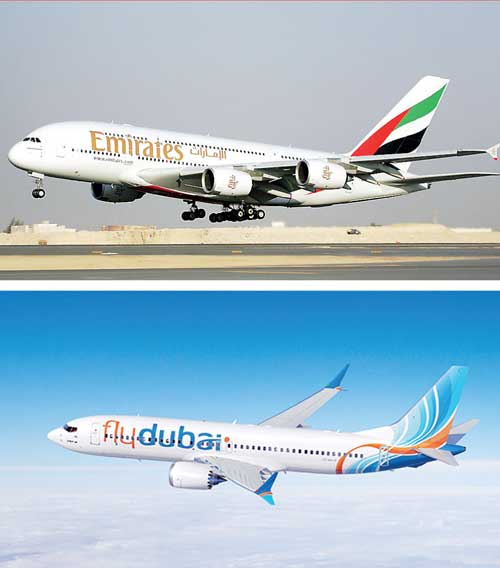Monday Jan 06, 2025
Monday Jan 06, 2025
Tuesday, 27 June 2017 00:00 - - {{hitsCtrl.values.hits}}
PARIS (Reuters) - Emirates, the Middle East’s largest airline, and budget carrier flydubai will start to deepen their relationship over the next 18 months as their owner, the Dubai government, seeks to improve returns.
Emirates President Tim Clark told reporters on Wednesday that changes could include more closely coordinated connecting - or feeder - flights, and a joint decision on schedules to soften head-to-head competition in some markets.
The comments at the Paris Airshow come two months after the chairman of both airlines, Sheikh Ahmed bin Saeed al-Maktoum said they had “to work with a better synergy.”
The carriers currently have an interline agreement allowing their passengers to connect between each other’s flights.
“We are minded to accelerate a greater joining of the hip, of what we do, there’s a lot of work going on there to extract value for the shareholder,” Clark said.
The push by their state owner comes amid pressure on profits at both airlines.
Emirates’ annual profit fell in the year ended March 31 for the first time in five years. Flydubai’s 2016 profit fell for a second consecutive year.
A “rationalisation of assets and airport utilisation” by Emirates and flydubai could extend the life of Dubai International Airport, Clark said.
Emirates operates an exclusively wide-body fleet of Airbus A380 and Boeing 777 aircraft, whereas flydubai operates narrow-body Boeing 737s.
Dubai Airport, the hub for both airlines and the world’s busiest for international travel, has become increasingly congested during peak periods. It handled 30.1 million passengers in the first four months of the year, up 7.8% on the same period last year.
Clark has previously warned congestion at the airport, which is expected to hit its maximum capacity of 118 million passengers a year by 2023, could limit Emirates’ growth.
Dubai is expanding a new airport, Al Maktoum International, which is slated one day to be capable of handling 240 million passengers a year.
The expansion has been delayed and Clark signalled Emirates’ plans to move there by 2025 have been pushed back until sometime between 2026 and 2030.
Dubai Airport Chief Executive Paul Griffiths told Reuters its goal remained to deliver a “capacity of 120 million passengers per year by 2025.”
“However, given the scale of that project and the unprecedented complexity of the relocation of the Emirates hub, it is sensible for Emirates to build contingencies into its plan,” he said.